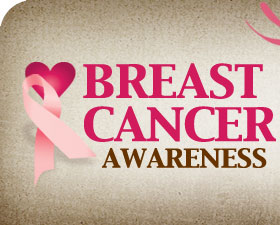What to expect after a mastectomy
A person's life changes when he or she receives a breast cancer diagnosis. There are many questions that need to be answered, and one of them is usually, "What are my options?"One of the treatment options in the fight against breast cancer is a mastectomy. Though the number of mastectomies performed each year was in decline a mere decade ago, more and more are now being performed thanks in large part to less invasive treatments. A study of more than 5,000 Mayo Clinic cancer patients revealed a 13 percent increase in the number of mastectomies performed between 2003 and 2006.
A small but growing number of women are also electing to have "preventative" mastectomies, which could involve removing one or both of the breasts if there is a high genetic disposition to getting breast cancer in the family or if cancerous cells were detected in one breast. In 2006, the last year for which national data is available, more than 15 percent of breast cancer patients ages 18 to 39 had a healthy breast removed, says the University of Minnesota's Elizabeth Habermann, co-author of a 2010 study in the Journal of Clinical Oncology.
A mastectomy is an umbrella term used to describe the removal of the entire breast, portions of the breast, or just the lymph nodes under the armpits.
The main types of a mastectomy include:
* Modified radical mastectomy: This involves removal of the entire breast, including the breast tissue, skin, areola, and nipple. In some cases, the lining over the chest muscles, as well as most of the underarm lymph nodes, is also removed.
* Simple total mastectomy: This surgery involves removal of the entire breast, tissue, skin, areola and nipple.
* Skin-sparing mastectomy: The breast tissue, nipple and areola are removed, but the skin is spared. Breast reconstruction surgery is typically performed immediately after.
* Nipple-sparing mastectomy: Only the breast tissue is removed, leaving the skin, nipple, areola and chest wall muscles. Again, reconstruction of the breast is typically performed immediately afterward.
After Surgery
Expect to stay one to two days in the hospital after surgery. The nursing staff will have a dressing over the surgical site, so you likely will not be able to see the results until a follow-up visit a week or more after the surgery. The doctor will advise proper home care to keep the area clean, and you should be aware of signs for infection. You may have surgical drains in place that will need to be watched and emptied.
Some pain is common post-surgery, and pain medications may be prescribed. Adequate rest is urged for proper healing and to prevent opening the wound site. Dissolvable stitches are often used to close the wound, but some doctors prefer staples, which will be removed at a follow-up visit. Bruising and soreness are to be expected. A fever could be indicative of an infection.
Recovering from surgery
Depending on the type of mastectomy performed, you may be left with anything from small scarring to a sunken, asymmetrical chest. You may want to avoid wearing or getting fitted for a new bra until the wound is completely healed and swelling has declined, which can take six weeks.
Although strenuous exercise should be avoided, many patients will be given exercises to perform so they can regain movement and flexibility. Walking is an exercise that can be done immediately, but a doctor will be able to tell you when more exercises can be done.
You may resume driving when pain medication is no longer needed. Practicing driving in a parking lot can help you figure out if there is any pain associated with turning the wheel or pressing down on the accelerator or brake.
Body image
If reconstructive surgery is not an option, breast prosthetics can restore balance to the breast area and help with post-mastectomy body image. Professional fitters can help size and fit a prosthetic to your body. Some cancer organizations offer free prostheses if insurance doesn't cover them.
Mastectomy bras are another option. They generally have pockets in the cups that can hold breast forms. Some women choose to wear regular bras and simply slip forms inside.
In cases where underarm lymph nodes had to be removed, there may be extensive scarring under the arms. Therefore. when trying on blouses and other shirts, take a close look at the armholes. Anything too loose may make you feel uncomfortable if it exposes scarring.
Depending on how much tissue and breast wall has been removed, the chest may actually be concave. Wearing patterned shirts can help disguise this area and draw attention away. Fashion has come a long way, and there are now many different options in post-mastectomy clothing.
Having a mastectomy is seldom easy, but knowing what to expect afterward can chase away some of the anxiety.




